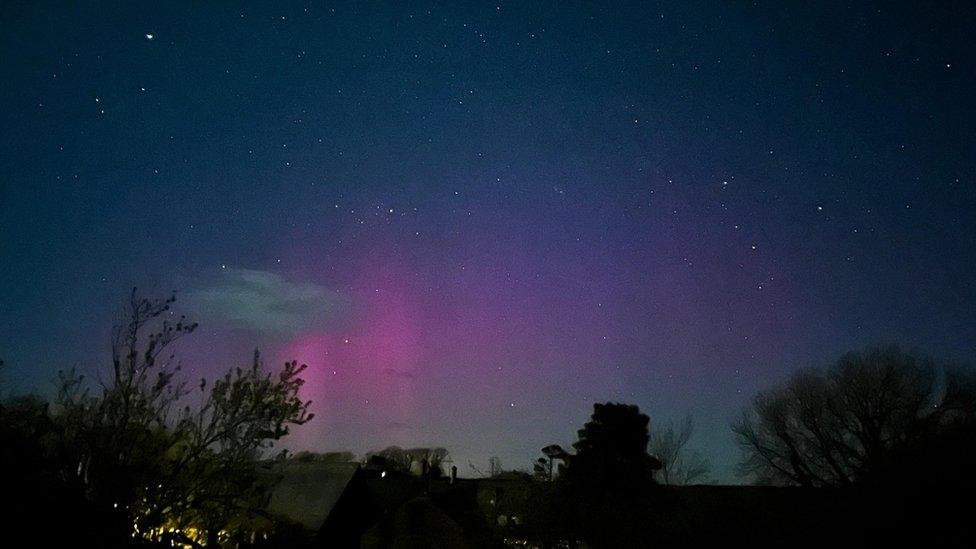Northern Lights put on display above Cornwall
- Published

BBC Weather Watcher Nick F saw the Northern Lights over St Ervan
Colourful displays from the Northern Lights were spotted above Cornwall on Tuesday night.
A picture sent into BBC Weather Watchers at 23:58 BST by Jo Shreeve showed pink light over Stithians.
Another taken by fellow Weather Watcher Nick F showed a similar coloured light over St Ervan at about 23:30.
The lights, also known as Aurora Borealis, occur when charged particles from the sun collide with gases in Earth's atmosphere.

Jo Shreeve caught the Northern Lights over Stithians
The Northern Lights were also spotted above Cornwall on 3 March and 24 September, with BBC South West senior meteorologist David Braine saying the forecast for Wednesday night across the UK for the lights is better than Tuesday.

Analysis from BBC South West senior meteorologist David Braine
Yesterday evening at approximately 18:00, there was a moderate solar flare or Coronal Mass Ejection - an ejection of charged ions from the sun into interplanetary space - from the sun directed towards Earth.
Solar flares are the sudden releases of energy across the entire electromagnetic spectrum. They are hard to predict, and the energy can be detected in Earth's atmosphere as soon as eight to 10 minutes after the occurrence of a solar flare.
The Northern Lights occur as a consequence of solar activity and result from collisions of charged particles in the solar wind colliding with molecules in the Earth's upper atmosphere.

Follow BBC Cornwall on X (formerly Twitter), external, Facebook, external and Instagram, external. Send your story ideas to spotlight@bbc.co.uk, external.
Related topics
- Published4 March 2024

- Attribution
- Published4 March 2024

- Published6 November 2023
